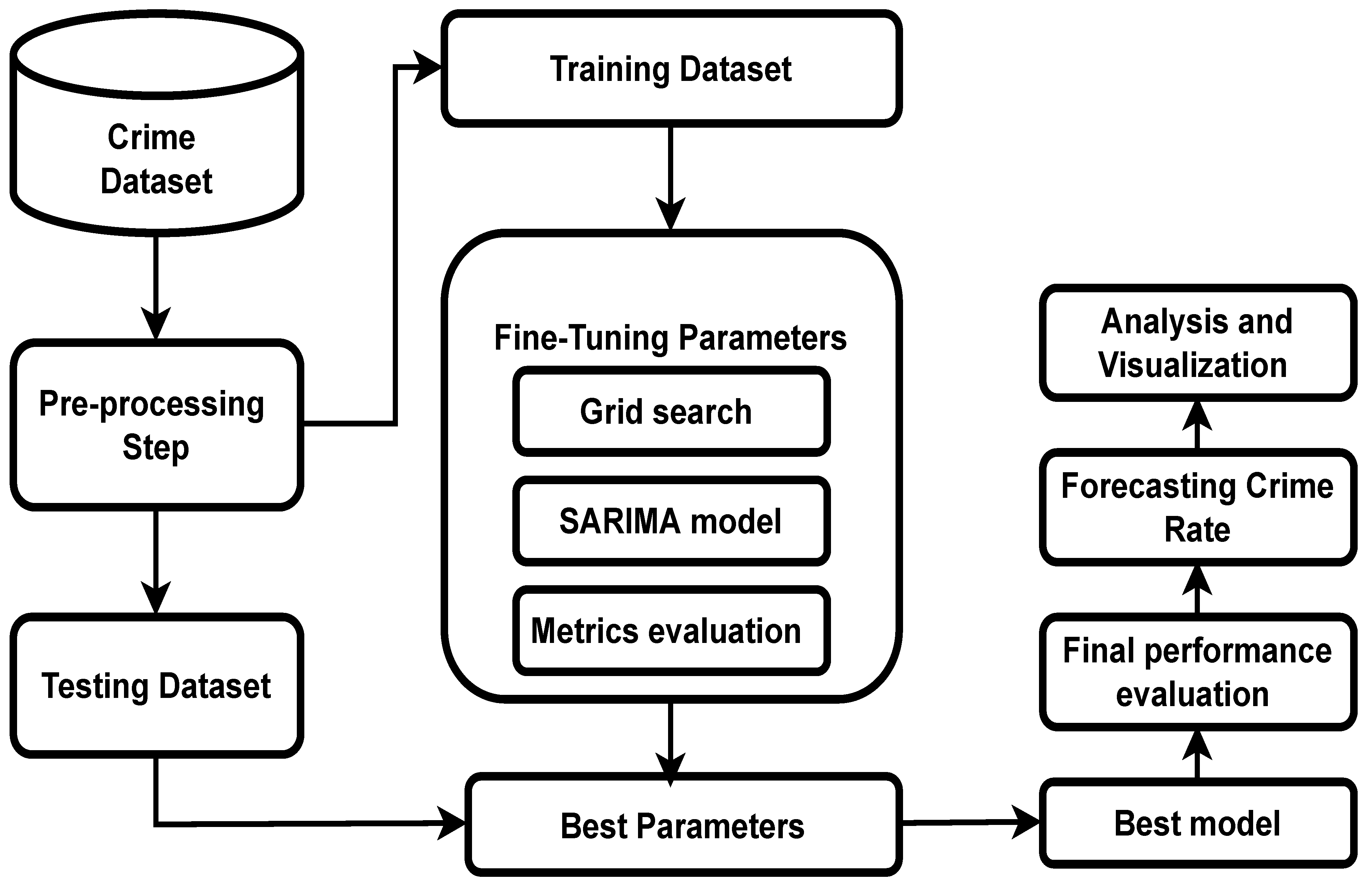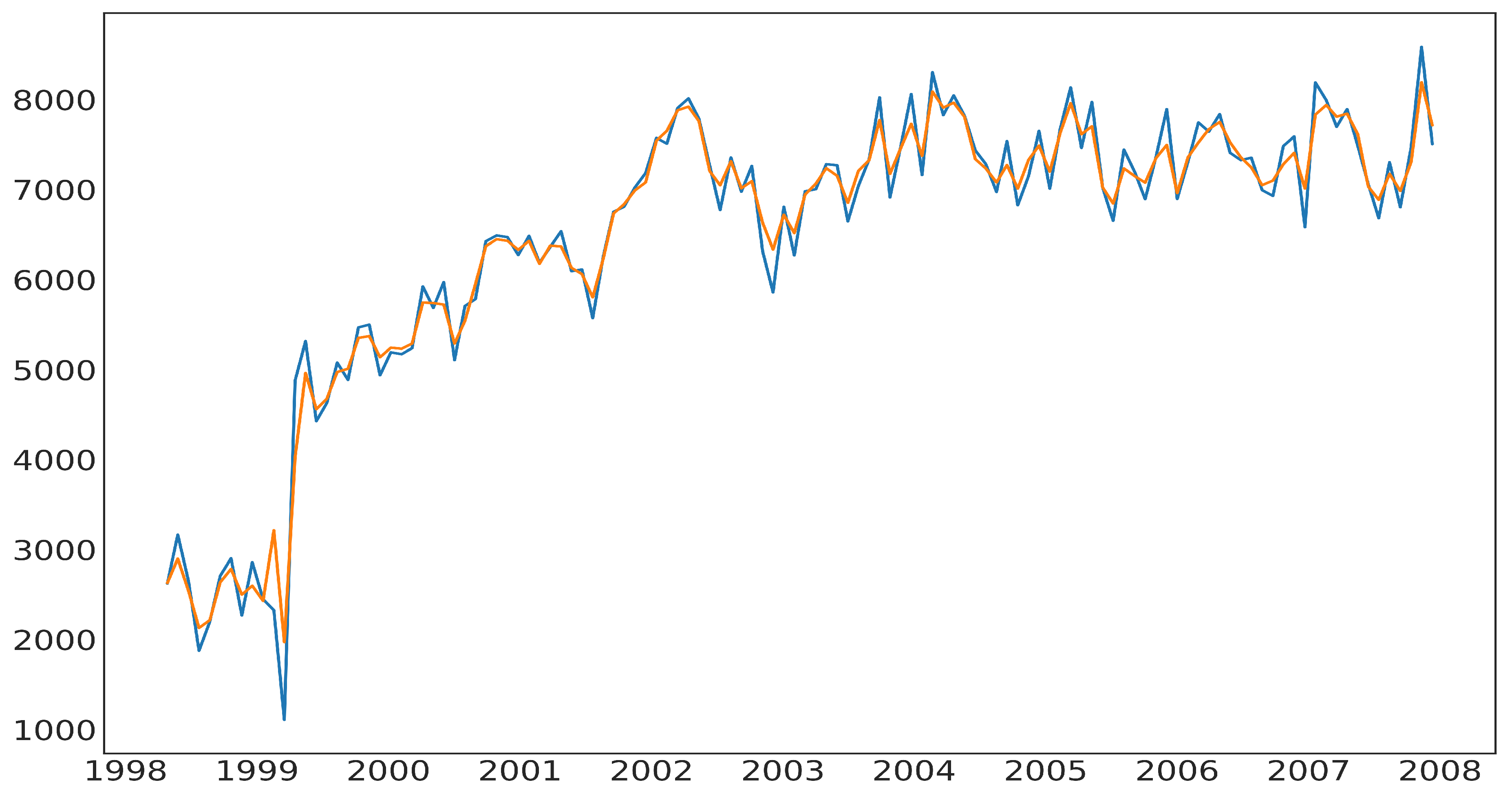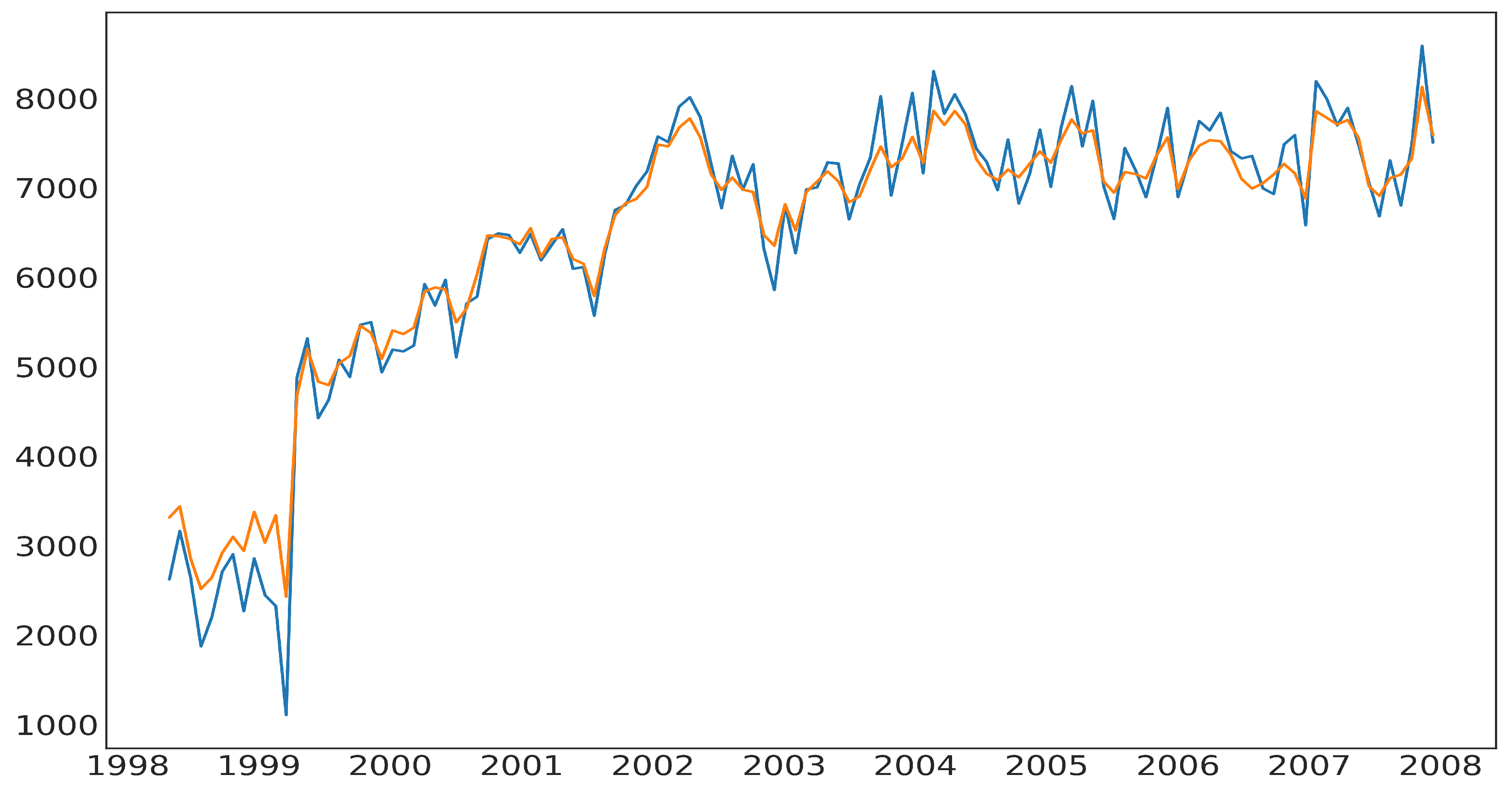SARIMA: A Seasonal Autoregressive Integrated Moving Average Model for Crime Analysis in Saudi Arabia
Abstract
:1. Introduction
- SARIMA model is introduced to analyze and predict crime patterns.
- SARIMA model is designed to predict crime rates more accurately than the state-of-the-art models.
- The plot of forecasts on the dataset is used to visualize the effectiveness of the SARIMA model in predicting crime.
2. Related Work
3. Methodology
3.1. Dataset Description
3.2. Preprocessing
3.3. The Autoregressive Integrated Moving Average (ARIMA) Models
3.4. Seasonal ARIMA Model
4. Experimental Evaluation
4.1. Experimental Results
4.2. Comparison with Other Models
5. Conclusions
Author Contributions
Funding
Conflicts of Interest
References
- Bahi, A.; Shahidra, K.; Mohd, R.; Zulkifli, Y. Quranic approach in portraying crime stories. Middle East J. Sci. Res. 2012, 12, 124–130. [Google Scholar]
- Adel, H.; Salheen, M.; Mahmoud, R.A. Crime in relation to urban design. Case study: The Greater Cairo Region. Ain Shams Eng. J. 2016, 7, 925–938. [Google Scholar] [CrossRef] [Green Version]
- Ministry of the Interior in Saudi. Statistical Yearbook. 2022. Available online: https://www.moh.gov.sa/en/Ministry/Statistics/book/Pages/default.aspx (accessed on 22 October 2022).
- Kaplan, J. Uniform Crime Reporting (UCR) Program Data: A Practitioner’s Guide. CrimRxiv 2021. [Google Scholar] [CrossRef]
- Bruin, J.D.; Cocx, T.; Kosters, W.; Laros, J.J.; Kok, J. Data Mining Approaches to Criminal Career Analysis. In Proceedings of the Sixth International Conference on Data Mining (ICDM’06), Hong Kong, China, 18–22 December 2006; pp. 171–177. [Google Scholar] [CrossRef] [Green Version]
- Agarwal, J.; Nagpal, R.; Sehgal, R. Crime Analysis using K-Means Clustering. Int. J. Comput. Appl. 2013, 83, 1–4. [Google Scholar] [CrossRef]
- Babakura, A.; Sulaiman, M.N.; Yusuf, M.A. Improved method of classification algorithms for crime prediction. In Proceedings of the 2014 International Symposium on Biometrics and Security Technologies (ISBAST), Kuala Lumpur, Malaysia, 26–27 August 2014; pp. 250–255. [Google Scholar] [CrossRef]
- Yu, C.H.; Ward, M.W.; Morabito, M.; Ding, W. Crime Forecasting Using Data Mining Techniques. In Proceedings of the 2011 IEEE 11th International Conference on Data Mining Workshops, Beijing, China, 8–11 November 2011. [Google Scholar] [CrossRef]
- Almanie, T.; Mirza, R.; Lor, E. Crime Prediction Based on Crime Types and Using Spatial and Temporal Criminal Hotspots. Int. J. Data Min. Knowl. Manag. Process. 2015, 5, 1–19. [Google Scholar] [CrossRef] [Green Version]
- Chen, P.; Yuan, H.; Shu, X. Forecasting Crime Using the ARIMA Model. In Proceedings of the 2008 Fifth International Conference on Fuzzy Systems and Knowledge Discovery, Jinan, China, 18–20 October 2008. [Google Scholar] [CrossRef]
- Sivaranjani, S.; Sivakumari, S.; Aasha, M. Crime prediction and forecasting in Tamilnadu using clustering approaches. In Proceedings of the 2016 International Conference on Emerging Technological Trends (ICETT), Kollam, India, 21–22 October 2016; Volume 50. [Google Scholar] [CrossRef]
- Kim, S.; Joshi, P.; Kalsi, P.S.; Taheri, P. Crime Analysis Through Machine Learning. In Proceedings of the 2018 IEEE 9th Annual Information Technology, Electronics and Mobile Communication Conference (IEMCON), Vancouver, BC, Canada, 1–3 November 2018. [Google Scholar] [CrossRef]
- Borowik, G.; Wawrzyniak, Z.M.; Cichosz, P. Time series analysis for crime forecasting. In Proceedings of the 2018 26th International Conference on Systems Engineering (ICSEng), Sydney, NSW, Australia, 18–20 December 2018. [Google Scholar] [CrossRef]
- Saravanan, M.; Thayyil, R.; Narayanan, S. Enabling Real Time Crime Intelligence Using Mobile GIS and Prediction Methods. In Proceedings of the 2013 European Intelligence and Security Informatics Conference, Washington, DC, USA, 12–14 August 2013; pp. 125–128. [Google Scholar] [CrossRef]
- Pande, V.; Samant, V.; Nair, S. Crime Detection using Data Mining. Int. J. Eng. Res. Technol. 2016, V5, 891–896. [Google Scholar] [CrossRef]
- Butt, U.M.; Letchmunan, S.; Hassan, F.H.; Ali, M.; Baqir, A.; Sherazi, H.H.R. Spatio-Temporal Crime HotSpot Detection and Prediction: A Systematic Literature Review. IEEE Access 2020, 8, 166553–166574. [Google Scholar] [CrossRef]
- Chainey, S.; Ratcliffe, J. Identifying Crime Hotspots. In GIS and Crime Mapping; John Wiley & Sons, Inc.: New York, NY, USA, 2013; pp. 145–182. [Google Scholar] [CrossRef]
- Umair, A.; Sarfraz, M.S.; Ahmad, M.; Habib, U.; Ullah, M.H.; Mazzara, M. Spatiotemporal Analysis of Web News Archives for Crime Prediction. Appl. Sci. 2020, 10, 8220. [Google Scholar] [CrossRef]
- Chackravarthy, S.; Schmitt, S.; Yang, L. Intelligent Crime Anomaly Detection in Smart Cities Using Deep Learning. In Proceedings of the 2018 IEEE 4th International Conference on Collaboration and Internet Computing (CIC), Philadelphia, PA, USA, 18–20 October 2018. [Google Scholar] [CrossRef]
- Azeez, J.; Aravindhar, D.J. Hybrid approach to crime prediction using deep learning. In Proceedings of the 2015 International Conference on Advances in Computing, Communications and Informatics (ICACCI), Kochi, India, 10–13 August 2015; pp. 1701–1710. [Google Scholar] [CrossRef]
- Zhang, Y.; Cheng, T. Graph deep learning model for network-based predictive hotspot mapping of sparse spatio-temporal events. Comput. Environ. Urban Syst. 2020, 79, 101403. [Google Scholar] [CrossRef]
- Wang, B.; Yin, P.; Bertozzi, A.L.; Brantingham, P.J.; Osher, S.J.; Xin, J. Deep Learning for Real-Time Crime Forecasting and Its Ternarization. Chin. Ann. Math. Ser. B 2019, 40, 949–966. [Google Scholar] [CrossRef]
- Shamsuddin, N.H.M.; Ali, N.A.; Alwee, R. An overview on crime prediction methods. In Proceedings of the 2017 6th ICT International Student Project Conference (ICT-ISPC), Johor, Malaysia, 23–24 May 2017; pp. 1–5. [Google Scholar] [CrossRef]
- Paolella, M.S. ARMA Model Identification. In Linear Models and Time-Series Analysis; John Wiley & Sons, Inc.: New York, NY, USA, 2018; pp. 405–442. [Google Scholar] [CrossRef]
- Box, G.E.; Jenkins, G.M.; Reinsel, G.C.; Ljung, G.M. Time Series Analysis: Forecasting and Control; John Wiley & Sons: New York, NY, USA, 2015. [Google Scholar]
- Brockwell, P.J.; Davis, R.A. Introduction to Time Series and Forecasting. Biometrics 1998, 54, 1204. [Google Scholar] [CrossRef]
- Al-Douri, Y.; Hamodi, H.; Lundberg, J. Time Series Forecasting Using a Two-Level Multi-Objective Genetic Algorithm: A Case Study of Maintenance Cost Data for Tunnel Fans. Algorithms 2018, 11, 123. [Google Scholar] [CrossRef] [Green Version]
- Chintalapudi, N.; Battineni, G.; Amenta, F. COVID-19 virus outbreak forecasting of registered and recovered cases after sixty day lockdown in Italy: A data driven model approach. J. Microbiol. Immunol. Infect. 2020, 53, 396–403. [Google Scholar] [CrossRef] [PubMed]
- Ryabko, D. Asymptotic Nonparametric Statistical Analysis of Stationary Time Series; Springer International Publishing: Cham, Switzerland, 2019. [Google Scholar] [CrossRef] [Green Version]
- Eze, N.; Asogwa, O.; Obetta, A.; Ojide, K.; Okonkwo, C. A Time Series Analysis of Federal Budgetary Allocations to Education Sector in Nigeria (1970-2018). Am. J. Appl. Math. Stat. 2020, 8, 1–8. [Google Scholar]
- Rebala, G.; Ravi, A.; Churiwala, S. An Introduction to Machine Learning; Springer International Publishing: Cham, Switzerland, 2019. [Google Scholar] [CrossRef]
- Chen, P.; Niu, A.; Liu, D.; Jiang, W.; Ma, B. Time Series Forecasting of Temperatures using SARIMA: An Example from Nanjing. IOP Conf. Ser. Mater. Sci. Eng. 2018, 394, 052024. [Google Scholar] [CrossRef]
- Malki, A.; Atlam, E.S.; Gad, I. Machine learning approach of detecting anomalies and forecasting time-series of IoT devices. Alex. Eng. J. 2022, 61, 8973–8986. [Google Scholar] [CrossRef]
- Malki, Z.; Atlam, E.S.; Ewis, A.; Dagnew, G.; Ghoneim, O.A.; Mohamed, A.A.; Abdel-Daim, M.M.; Gad, I. The COVID-19 pandemic: Prediction study based on machine learning models. Environ. Sci. Pollut. Res. 2021, 28, 40496–40506. [Google Scholar] [CrossRef] [PubMed]
- Farsi, M.; Hosahalli, D.; Manjunatha, B.; Gad, I.; Atlam, E.S.; Ahmed, A.; Elmarhomy, G.; Elmarhoumy, M.; Ghoneim, O.A. Parallel genetic algorithms for optimizing the SARIMA model for better forecasting of the NCDC weather data. Alex. Eng. J. 2021, 60, 1299–1316. [Google Scholar] [CrossRef]
- Hashim, H.; Atlam, E.S.; Malik Almalki, M.M.E.S.; El-Agamy, R.; Dagnew, G.; Ghoneim, O.; Gad, I. Integrating Data Warehouse and Machine Learning to Predict on COVID-19 Pandemic Empirical Data. J. Theor. Appl. Inf. Technol. 2021, 1, 63–72. [Google Scholar]
- Malki, Z.; Atlam, E.S.; Ewis, A.; Dagnew, G.; Alzighaibi, A.R.; ELmarhomy, G.; Elhosseini, M.A.; Hassanien, A.E.; Gad, I. ARIMA models for predicting the end of COVID-19 pandemic and the risk of second rebound. Neural Comput. Appl. 2020, 33, 2929–2948. [Google Scholar] [CrossRef] [PubMed]







| Years | Month | Number of Crimes | Date |
|---|---|---|---|
| 1419 | Muharram | 2623 | 27-04-1998 |
| 1419 | Safar | 3165 | 26-05-1998 |
| 1419 | Rabi I | 2646 | 25-06-1998 |
| 1419 | Rabi II | 1875 | 24-07-1998 |
| 1419 | Jumada I | 2199 | 23-08-1998 |
| … | … | … | … |
| 1428 | Sha’aban | 7305 | 14-08-2007 |
| 1428 | Rhamadhan | 6804 | 13-09-2007 |
| 1428 | Shawwal | 7471 | 13-10- 2007 |
| 1428 | Dhol-Qa’adah | 8586 | 11-11-2007 |
| 1428 | Dhul-Hijjah | 7506 | 11-12-2007 |
| (p, d, q) | (P, D, Q, s) | AIC | MAPE | MAE | MPE | MSE | RMSE | Corr | MinMax |
|---|---|---|---|---|---|---|---|---|---|
| (1, 0, 8) | (1, 0, 0, 12) | −167.9222 | 0.24716 | 0.150328 | 0.237733 | 0.031013 | 0.176106 | 0.530727 | 0.181175 |
| (1, 0, 8) | (2, 0, 0, 6) | −166.870228 | 0.233085 | 0.140898 | 0.221294 | 0.028253 | 0.168086 | 0.509499 | 0.171966 |
| (1, 0, 9) | (1, 0, 0, 12) | −166.013507 | 0.255806 | 0.155839 | 0.248155 | 0.033001 | 0.181661 | 0.533153 | 0.186252 |
| (1, 0, 9) | (2, 0, 0, 6) | −164.987283 | 0.234343 | 0.14164 | 0.223705 | 0.02858 | 0.169055 | 0.519412 | 0.172596 |
| (p, d, q) | (P, D, Q, s) | AIC | MAPE | MAE | MPE | MSE | RMSE | Corr | MinMax |
|---|---|---|---|---|---|---|---|---|---|
| (0, 0, 0) | (2, 0, 2, 12) | −87.482253 | 0.10098 | 0.066059 | 0.071452 | 0.006327 | 0.079541 | 0.853327 | 0.088572 |
| (0, 0, 2) | (2, 0, 2, 12) | −112.166294 | 0.139144 | 0.090887 | 0.127076 | 0.011745 | 0.108376 | 0.85006 | 0.116211 |
| (0, 0, 1) | (2, 0, 2, 12) | −102.406443 | 0.129237 | 0.081695 | 0.118656 | 0.009787 | 0.098929 | 0.845524 | 0.107841 |
| (6, 0, 8) | (0, 1, 2, 12) | −106.470466 | 0.087934 | 0.058467 | 0.033316 | 0.005926 | 0.076981 | 0.84099 | 0.078726 |
| Date | Actual | Predicted | Lower | Upper | Date | Actual | Predicted | Lower | Upper |
|---|---|---|---|---|---|---|---|---|---|
| 06-08-2005 | 7445.0 | 7005.7260 | 6289.8961 | 7721.5558 | 2006-10-23 | 7485.0 | 7227.3799 | 6512.9191 | 7941.8408 |
| 05-09-2005 | 7196.0 | 6997.3763 | 6281.7468 | 7713.0058 | 2006-11-22 | 7590.0 | 7549.2558 | 6834.7950 | 8263.7166 |
| 04-10-2005 | 6894.0 | 7224.9717 | 6509.3423 | 7940.6011 | 2006-12-22 | 6582.0 | 7292.2486 | 6577.9272 | 8006.5700 |
| 03-11-2005 | 7364.0 | 7296.0700 | 6580.6314 | 8011.5086 | 2007-01-20 | 8190.0 | 7272.6534 | 6558.3321 | 7986.9747 |
| 03-12-2005 | 7893.0 | 7684.3451 | 6968.9066 | 8399.7836 | 2007-02-19 | 7994.0 | 7866.7427 | 7152.5552 | 8580.9303 |
| 01-01-2006 | 6896.0 | 7215.7990 | 6500.5424 | 7931.0556 | 2007-03-20 | 7697.0 | 7579.4980 | 6865.3105 | 8293.6855 |
| 31-01-2006 | 7311.0 | 7477.3562 | 6762.0996 | 8192.6127 | 2007-04-18 | 7893.0 | 8336.0553 | 7621.9963 | 9050.1144 |
| 01-03-2006 | 7745.0 | 7758.9222 | 7043.8393 | 8474.0050 | 2007-05-18 | 7483.0 | 7610.1793 | 6896.1203 | 8324.2383 |
| 2006-03-30 | 7643.0 | 7334.0828 | 6619.0000 | 8049.1656 | 2007-06-16 | 7060.0 | 7647.3964 | 6933.4609 | 8361.3320 |
| 29-04-2006 | 7838.0 | 7671.5053 | 6956.5884 | 8386.4222 | 2007-07-15 | 6682.0 | 6872.9950 | 6159.0595 | 7586.9305 |
| 28-05-2006 | 7409.0 | 7471.5773 | 6756.6605 | 8186.4942 | 2007-08-14 | 7305.0 | 7149.9241 | 6436.1072 | 7863.7409 |
| 27-06-2006 | 7328.0 | 7491.9205 | 6777.1622 | 8206.6787 | 2007-09-13 | 6804.0 | 6919.1863 | 6205.3695 | 7633.0031 |
| 26-07-2006 | 7355.0 | 7570.0511 | 6855.2929 | 8284.8092 | 2007-10-13 | 7471.0 | 7387.8490 | 6674.1464 | 8101.5516 |
| 25-08-2006 | 6994.0 | 7324.1375 | 6609.5311 | 8038.7438 | 2007-11-11 | 8586.0 | 7538.3745 | 6824.6720 | 8252.0771 |
| 24-09-2006 | 6930.0 | 7020.5226 | 6305.9163 | 7735.1289 | 2007-12-11 | 7506.0 | 7700.7667 | 6987.1741 | 8414.3593 |
| Date | Predicted | Lower | Upper | Date | Predicted | Lower | Upper |
|---|---|---|---|---|---|---|---|
| 11-01-2008 | 8195.778078 | 7482.185545 | 8909.370612 | 2009-04-11 | 7990.049794 | 6883.934202 | 9096.165386 |
| 11-02-2008 | 8475.333189 | 7688.445969 | 9262.220409 | 2009-05-11 | 7870.693991 | 6761.046554 | 8980.341427 |
| 11-03-2008 | 7885.259983 | 7049.933784 | 8720.586181 | 2009-06-11 | 7905.195620 | 6791.838300 | 9018.552939 |
| 11-04-2008 | 8005.299225 | 7027.213276 | 8983.385175 | 2009-07-11 | 7770.591970 | 6656.888659 | 8884.295281 |
| 11-05-2008 | 7676.017299 | 6684.733328 | 8667.301271 | 2009-08-11 | 7887.609149 | 6770.468705 | 9004.749594 |
| 11-06-2008 | 7745.672025 | 6740.292121 | 8751.051929 | 2009-09-11 | 7823.697939 | 6706.154293 | 8941.241584 |
| 11-07-2008 | 7376.689790 | 6371.191542 | 8382.188038 | 2009-10-11 | 7933.489424 | 6815.539529 | 9051.439318 |
| 11-08-2008 | 7660.183727 | 6642.158550 | 8678.208904 | 2009-11-11 | 8109.932552 | 6991.573339 | 9228.291765 |
| 11-09-2008 | 7474.377960 | 6456.137629 | 8492.618291 | 2009-12-11 | 7960.060314 | 6841.288690 | 9078.831938 |
| 11-10-2008 | 7738.974418 | 6720.517274 | 8757.431562 | 2010-01-11 | 8073.364985 | 6945.186614 | 9201.543357 |
| 11-11-2008 | 8176.345989 | 7157.670361 | 9195.021618 | 2010-02-11 | 8125.719282 | 6994.248341 | 9257.190224 |
| 11-12-2008 | 7767.369518 | 6748.473721 | 8786.265314 | 2010-03-11 | 8048.817954 | 6914.622189 | 9183.013718 |
| 11-01-2009 | 8040.837254 | 6977.589181 | 9104.085327 | 2010-04-11 | 8077.540573 | 6937.634135 | 9217.447011 |
| 11-02-2009 | 8156.155368 | 7081.601112 | 9230.709624 | 2010-05-11 | 8039.500116 | 6898.074064 | 9180.926167 |
| 11-03-2009 | 7936.180321 | 6853.071904 | 9019.288738 | 2010-06-11 | 8060.817630 | 6917.826242 | 9203.809017 |
| The State-of-the-Art Models | R2 Score | MAE Score |
|---|---|---|
| Linear regression (LR) | 0.60197 | 0.899 |
| XGB | 0.97907 | 177.32 |
| Random forest (RF) | 0.98187 | 151.45 |
| SARIMA | 0.853 | 0.066059 |
Publisher’s Note: MDPI stays neutral with regard to jurisdictional claims in published maps and institutional affiliations. |
© 2022 by the authors. Licensee MDPI, Basel, Switzerland. This article is an open access article distributed under the terms and conditions of the Creative Commons Attribution (CC BY) license (https://creativecommons.org/licenses/by/4.0/).
Share and Cite
Noor, T.H.; Almars, A.M.; Alwateer, M.; Almaliki, M.; Gad, I.; Atlam, E.-S. SARIMA: A Seasonal Autoregressive Integrated Moving Average Model for Crime Analysis in Saudi Arabia. Electronics 2022, 11, 3986. https://doi.org/10.3390/electronics11233986
Noor TH, Almars AM, Alwateer M, Almaliki M, Gad I, Atlam E-S. SARIMA: A Seasonal Autoregressive Integrated Moving Average Model for Crime Analysis in Saudi Arabia. Electronics. 2022; 11(23):3986. https://doi.org/10.3390/electronics11233986
Chicago/Turabian StyleNoor, Talal H., Abdulqader M. Almars, Majed Alwateer, Malik Almaliki, Ibrahim Gad, and El-Sayed Atlam. 2022. "SARIMA: A Seasonal Autoregressive Integrated Moving Average Model for Crime Analysis in Saudi Arabia" Electronics 11, no. 23: 3986. https://doi.org/10.3390/electronics11233986
APA StyleNoor, T. H., Almars, A. M., Alwateer, M., Almaliki, M., Gad, I., & Atlam, E.-S. (2022). SARIMA: A Seasonal Autoregressive Integrated Moving Average Model for Crime Analysis in Saudi Arabia. Electronics, 11(23), 3986. https://doi.org/10.3390/electronics11233986








